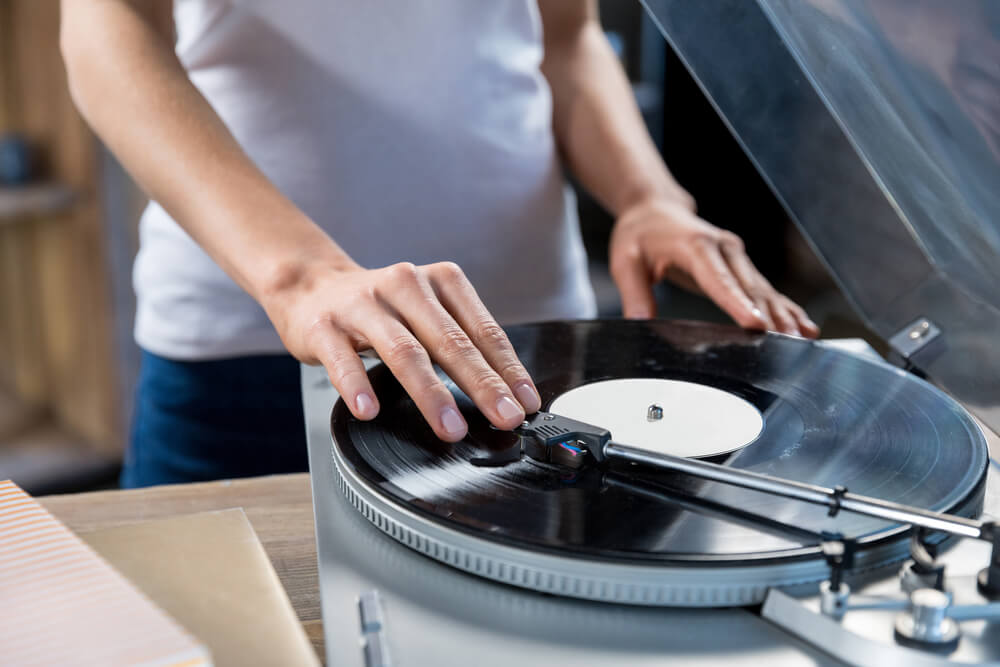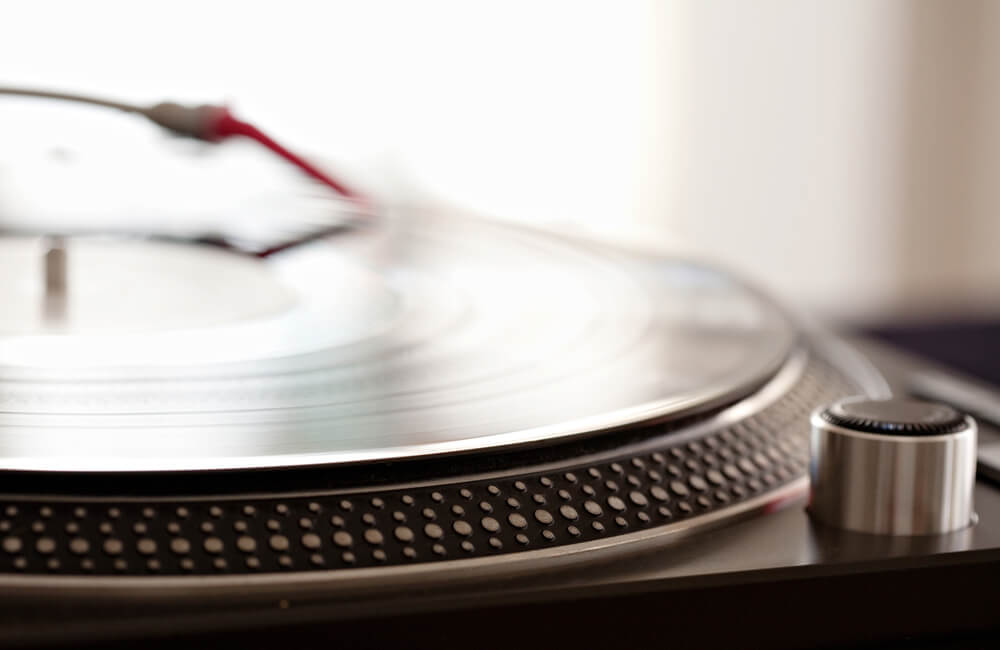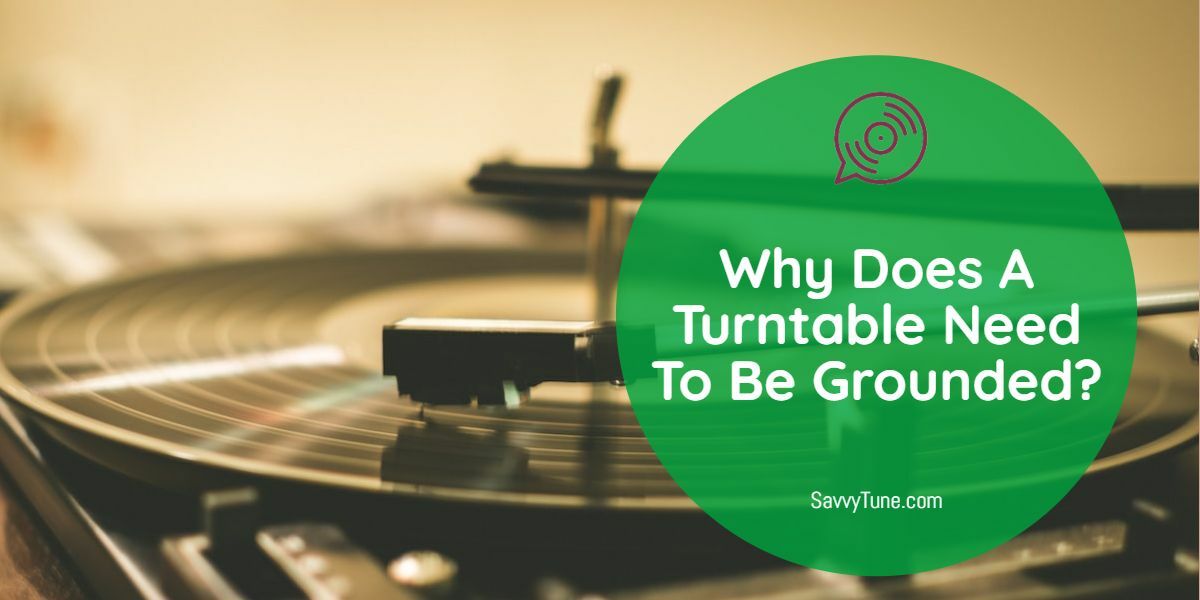As avid audiophiles, we’re all constantly looking for ways to improve our turntable’s sound. That’s why many people opt for better tonearms and cartridges.
However, grounding your device can also be an effective way of boosting the audio. So, why does a turntable need to be grounded?
When you don’t discharge excess current, the turntable can create a ground loop. This produces a humming noise that will get worse over time.
Let’s take a look at what grounding is and how you can use it to improve your listening experience.
What Is Grounding?
The main function of any turntable is to play vinyl records. To do that, the device will use an electrical current to power all its different components. This includes the platter, belt drives, tonearm, and any other movable parts.
For that to happen, the current needs to be able to travel freely through cables.
Over time, as the electricity moves around, these wires can begin to degrade. When that occurs, the overall resistance decreases, and you get current surges.
The sudden bursts of power can go into different components and short-circuit them.
On top of that, if the wires are in contact with the device plinth, the cables will charge the platform. That means anyone that touches the turntable may get a nasty shock.
To get around this issue, manufacturers use grounding wires. These are cables with low resistance that connect directly to the electrical panel.
The wires will collect any excess charge and return it back to the turntable’s power source. This will trip the circuit breaker and shut off the device.
So, the wires act as a safety precaution to avoid any damage to the device or users.
Why Ground Your Turntable?
Even though the lack of grounding can lead to shocks, this is quite rare. However, there is another issue that’s much more common.
Without a grounding wire, your turntable can create a ground loop.
Basically, the excess electrical current will continue to travel through the device. As it’s moving, it can cause the wires it’s flowing through to heat up and vibrate. Unfortunately, this motion will lead to an incessant humming.
You’ll start to hear faint distortion that’ll evolve into full-blown noise.
Grounding wires can also help eliminate electromagnetic waves. This is useful because the cartridge stylus is magnetic. So, as it moves over vinyl records, it creates noise signals.
This is the resonance that can distort your audio quality. A ground cable can dissipate these waves by sending them back into the electrical panel.

Users also read: Why does my turntable hum when the needle is on record?
Is Grounding Your Turntable Necessary?
The simplest answer to this question is no. You don’t need a ground wire for the turntable to operate.
However, your listening experience may take a hit. With constant use, it’s almost impossible to avoid ground loops.
Eventually, you’ll start hearing the frustrating hum. So, it’s a good idea to get ahead of it and ground the turntable for a better listening experience.
How to Ground Your Turntable
Now that you know why grounding is important, let’s move on to how you can apply the concept.
Step 1: Prepare Your Turntable
Before you start connecting wires, it’s a good idea to prep your turntable. The first step is disconnecting the power.
Since you’re dealing with electricity, there’s always a risk of minor shock. To eliminate this altogether, unplug both the turntable and your amplifier or speaker.
Then, you can move on to a little light cleaning. Grab a microfiber towel and wipe down the entire surface of the device.
Technically, this part of the process isn’t crucial. However, dusting will make handling the gadget easier.
Once that’s done, turn your attention to the lid. On some turntables, the cover may obstruct the input and outputs of the device.
For that reason, you may have to remove the lid while you’re going through the grounding process.
Step 2: Locate the Ground Wire
Once you unplug the device and clean it, we can move on to the grounding.
Most new turntables come with a compatible wire. To find it, you’ll have to flip the device over.
Then, look at the different cables and find the one with green insulation. This is usually the ground wire.
However, the color can change from one brand to another. So, instead of focusing on the shade, inspect the wire ends.
On the tip of the ground cable, there should be a spade connector. This is a thin, metallic structure that looks like the letter “U.” Usually, manufacturers place this wire on the outskirts of the plinth.
Unfortunately, if your device doesn’t come with its own cable, you’ll have to order one. The easiest way to do that is to purchase an 18 to 20-gauge standard wire. This should be sturdy enough to handle any excess charge from the turntable.
Still, buying a cable independently may lead to some compatibility issues. For that reason, it may be best to contact the turntable manufacturer and ask them to send you a wire.
Step 3: Prepare Your Ground Wire
After you find or buy the ground wire, you have to prep it before you use it.
For cables with spade connectors, this is quite easy. All you have to do is straighten out the wire and ensure the connector is intact.
You may also want to go over it with a cotton swab and some alcohol. Since the wire spends most of its time under the turntable, there’s a chance it collected a bit of dust.
The dust will interfere with the flow of current, so it’s best to get rid of it.
On the other hand, preparing a standard wire is a little more complicated. You’ll need to strip some of the protective layer to use the cable.
To do that, grab a pair of needle-nose pliers. Use the cutters to remove about half an inch of the insulation from both ends of the wire.
Be careful not to damage the copper inside while you do this.
Then, twist one end of the wire and plug it into the turntable.
Step 4: Find an Appropriate Location
With your turntable, amplifier, and wire ready, look for a suitable location in your home. You want a quiet area, with little to no signal interference.
This may be difficult to do, but just make sure there are no other major electrical appliances in the space. That includes microwaves, fridges, and even Wi-Fi routers.
Without this step, you may still experience some audio distortions.
Once you find the area, place the turntable and amplifier on a flat surface. Since you’ll run a wire between the two devices, it’s best to keep them close to each other.
If the two devices are far apart, you risk the wire tearing or not doing its job.
Step 5: Ground Your Amplifier
Now, with your wires ready, we can ground the amplifier. Typically, most speakers come with a pre-existing grounding port for safety.
So, all you have to do is find it. Start by looking at the back of the device and find the opening labeled “GROUND.”
This should be a screw terminal or a simple plug-in. After you find it, gently guide your grounding wire into place.
When using standard wires, make sure to twist the end before you plug it in. Frayed cables may lead to a short circuit or even minor shocks.

You should also try to use minimal force to avoid bending the wire inside the amplifier.
However, sometimes receivers don’t have grounding terminals. If that’s the case, don’t worry, you can still connect the wire to the amplifier.
Do that by touching the wire to the outside of the amplifier. Then, tape the cable into place to secure the connection.
Ideally, you’ll want to use gaffer tape for this, but a little duct tape will do in a pinch.
Unfortunately, this will only work if the speaker’s exterior shell is metallic. Otherwise, you may need to order a different amplifier for this process.
Users also read: Grado Black 3 vs. Ortofon 2M Red
Step 6: Power Up Your Devices
At this point, everything should be in place for the grounding. The next step is plugging in your devices.
Connect your turntable to the power first, and once it turns on, you can activate the speaker.
After that, place a vinyl record on the platter and take it for a spin. Listen carefully for any distortions or humming.
For the most part, this should eliminate all the noise. However, that’s not always the case.
Sometimes, grounding will only manage to dampen the humming. In that case, there’s one thing left to do.
You can try slowly shifting the grounding wire to the left and right. As you move the cable, the humming should change. Keep doing that until you find the position with the least distortion.
It’s important to note that at this point, the wires are live. That means they have an active electrical current moving through them.
So, during this time, make sure you don’t touch the exposed parts of the cable.

